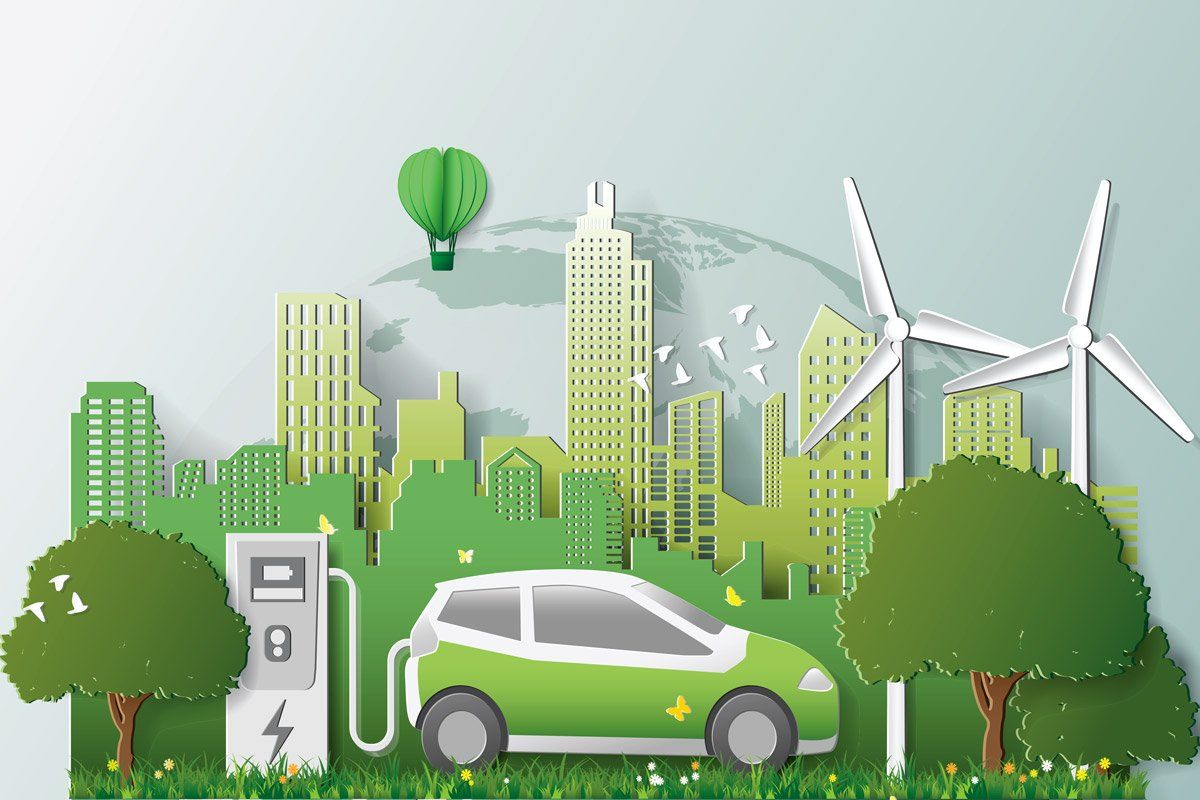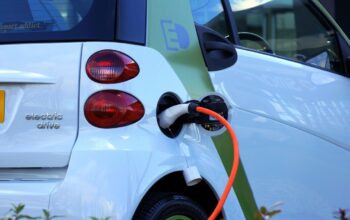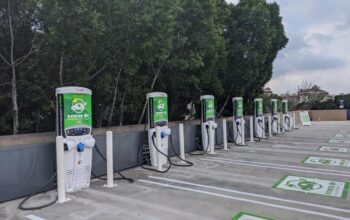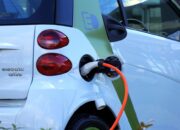The global automotive industry is undergoing a profound transformation, driven by an urgent need to address climate change and reduce our environmental footprint. For decades, the internal combustion engine (ICE) dominated personal transportation, but its reliance on fossil fuels has contributed significantly to air pollution and greenhouse gas emissions. Today, a new paradigm is emerging: sustainable driving. This isn’t just about the vehicles we choose, but also the technologies that power them, the materials they’re made from, and the behaviors we adopt behind the wheel. This comprehensive exploration delves into the multifaceted world of eco-friendly wheels, examining the technological advancements, behavioral shifts, and infrastructural changes paving the way for a greener automotive future.
The Environmental Imperative for Sustainable Driving
Our planet faces unprecedented environmental challenges, and transportation plays a substantial role. From tailpipe emissions contributing to smog and respiratory illnesses, to the carbon footprint associated with fuel production and distribution, the traditional automotive model has left a significant mark.
Key environmental concerns driving the shift towards sustainable driving include:
A. Greenhouse Gas Emissions: Vehicles are a major source of carbon dioxide (), methane (), and nitrous oxide (), which trap heat in the atmosphere and contribute to global warming.
B. Air Pollution: Particulate matter (PM2.5), nitrogen oxides (NOx), volatile organic compounds (VOCs), and carbon monoxide (CO) from vehicle exhausts lead to respiratory diseases, acid rain, and smog, particularly in urban areas.
C. Resource Depletion: The finite nature of fossil fuels necessitates a transition to alternative energy sources. Moreover, the extraction of raw materials for vehicle manufacturing, including metals for batteries, has its own environmental impact.
D. Noise Pollution: While often overlooked, vehicle noise significantly impacts urban environments, contributing to stress and other health issues.
E. Waste Generation: End-of-life vehicles contribute to landfill waste if not properly recycled or repurposed.
Addressing these issues requires a holistic approach, moving beyond incremental improvements to ICE vehicles and embracing truly sustainable alternatives.
The Rise of Electric Vehicles (EVs)
Electric Vehicles are at the forefront of the sustainable driving revolution. Unlike traditional cars, EVs use an electric motor powered by a battery pack, emitting zero tailpipe emissions. Their proliferation is rapidly changing the automotive landscape.
A. Types of Electric Vehicles
The term “EV” broadly encompasses several categories:
- Battery Electric Vehicles (BEVs): These are purely electric, running solely on battery power. They have no internal combustion engine, fuel tank, or exhaust system. Examples include Tesla models, Hyundai Ioniq 5, and Nissan Leaf.
- Plug-in Hybrid Electric Vehicles (PHEVs): PHEVs combine an electric motor and battery with an internal combustion engine. They can run on electric power for a significant range (typically 30-80 km or more) and then switch to gasoline or diesel once the battery is depleted. They can also be recharged from an external source. Examples include Toyota RAV4 Prime and Chrysler Pacifica Hybrid.
- Hybrid Electric Vehicles (HEVs): HEVs also combine gasoline and electric power but cannot be plugged in to charge the battery. The battery is recharged through regenerative braking and the ICE. They offer improved fuel efficiency compared to conventional cars but cannot run solely on electric power for extended periods. Examples include Toyota Prius and Honda CR-V Hybrid.
- Fuel Cell Electric Vehicles (FCEVs): FCEVs use hydrogen as fuel to produce electricity through a fuel cell, which then powers an electric motor. Their only emission is water vapor. While promising, the infrastructure for hydrogen refueling is still in its infancy. Examples include Toyota Mirai and Hyundai Nexo.
B. Advantages of Electric Vehicles
The benefits of embracing EVs extend beyond just zero tailpipe emissions:
- Reduced Emissions: When powered by renewable energy sources, EVs offer a near-zero carbon footprint from “well-to-wheel.” Even when charged from a grid relying on fossil fuels, their overall emissions are often lower than equivalent ICE vehicles due to greater energy efficiency.
- Lower Running Costs: Electricity is generally cheaper per kilometer than gasoline or diesel, especially when charging at home during off-peak hours. EVs also have fewer moving parts than ICE vehicles, leading to lower maintenance costs.
- Quieter Operation: Electric motors are significantly quieter than internal combustion engines, contributing to reduced noise pollution in urban areas and a more serene driving experience.
- Instant Torque and Smooth Acceleration: Electric motors deliver instant torque, providing rapid and smooth acceleration that many drivers find exhilarating.
- Government Incentives: Many governments offer incentives such as tax credits, rebates, and reduced registration fees to encourage EV adoption.
- Reduced Dependence on Fossil Fuels: Widespread EV adoption lessens a nation’s reliance on imported oil, enhancing energy security.
C. Challenges and Solutions for EV Adoption
Despite their advantages, EVs face certain hurdles:
- Range Anxiety: Concerns about the limited range of older EVs and the availability of charging infrastructure.
- Solution: Newer EV models offer significantly longer ranges (often 400+ km), and charging infrastructure is rapidly expanding globally.
- Charging Infrastructure: Lack of sufficient public charging stations, especially fast chargers.
- Solution: Governments and private companies are heavily investing in expanding public charging networks. Innovations like wireless charging and battery swapping stations are also being explored.
- Battery Production and Recycling: The environmental impact of mining raw materials (lithium, cobalt, nickel) for batteries and their end-of-life disposal.
- Solution: Advances in battery technology are reducing reliance on rare earth minerals. Furthermore, robust battery recycling programs are being developed to recover valuable materials and minimize waste. Research into solid-state batteries promises even greater efficiency and sustainability.
- Upfront Cost: EVs often have a higher purchase price than comparable ICE vehicles, though this gap is narrowing.
- Solution: Government incentives, lower running costs, and increasing production volumes are making EVs more financially accessible.
- Grid Capacity: Concerns about whether existing electricity grids can handle a massive influx of EVs.
- Solution: Smart charging solutions, vehicle-to-grid (V2G) technology (where EVs can feed power back to the grid during peak demand), and increased investment in renewable energy sources will help manage demand.
Beyond the Powertrain: Holistic Sustainable Design
Sustainable driving isn’t solely about propulsion. The entire lifecycle of a vehicle, from design and manufacturing to end-of-life recycling, plays a crucial role.
A. Lightweight Materials and Aerodynamics
Reducing vehicle weight directly impacts energy consumption. Lighter vehicles require less energy to move, whether powered by electricity or fossil fuels.
- Advanced Materials: Manufacturers are increasingly using lightweight materials such as:
- Aluminum: Lighter than steel, widely used for body panels and structural components.
- Carbon Fiber Reinforced Polymers (CFRPs): Extremely strong and lightweight, increasingly seen in high-performance and premium EVs.
- High-Strength Steel: While still steel, modern formulations are stronger, allowing for thinner gauges and reduced weight.
- Biomaterials: Research is exploring the use of sustainable, plant-based materials for interior components and even exterior panels.
- Aerodynamic Design: Sleek, aerodynamic designs reduce drag, leading to better fuel efficiency and extended EV range. Features like flush door handles, active grille shutters, and optimized underbodies are common.
B. Sustainable Manufacturing Processes
The production of a vehicle can be highly energy and resource-intensive. Manufacturers are adopting greener practices:
- Renewable Energy in Factories: Powering manufacturing plants with solar, wind, or other renewable energy sources significantly reduces the carbon footprint of production.
- Water Conservation: Implementing closed-loop water systems and efficient manufacturing processes to minimize water usage.
- Waste Reduction and Recycling: Reducing waste generated during production and maximizing the recycling of materials like steel, aluminum, and plastics.
- Local Sourcing: Sourcing components and materials locally can reduce transportation emissions associated with the supply chain.
C. Interior Materials and Circular Economy
The interior of a vehicle presents another opportunity for sustainability:
- Recycled and Sustainable Materials: Use of recycled plastics (from bottles, fishing nets, etc.), plant-based leather alternatives, and natural fibers (e.g., flax, kenaf) for upholstery, trim, and insulation.
- Durability and Longevity: Designing components to be more durable reduces the need for frequent replacements.
- Design for Disassembly and Recycling: Engineering vehicles so that their components can be easily separated and recycled at the end of their life, supporting a “circular economy” model.
Smart Mobility and Behavioral Shifts
Sustainable driving extends beyond the vehicle itself to encompass how we use transportation and the broader mobility ecosystem.
A. Intelligent Transportation Systems (ITS)
ITS leverages technology to improve transportation efficiency and reduce environmental impact:
- Traffic Management Systems: Optimizing traffic flow, reducing congestion, and minimizing idling time through smart traffic lights and real-time routing.
- Public Transport Integration: Seamless integration of public transport options with ride-sharing and micromobility solutions to reduce reliance on private vehicles.
- Smart Parking Solutions: Guiding drivers to available parking spaces, reducing cruising for parking and associated emissions.
B. Car Sharing and Ride-Hailing
These services promote more efficient use of existing vehicles:
- Reduced Vehicle Ownership: Car-sharing models reduce the overall number of vehicles on the road, as individuals can access a car only when needed.
- Optimized Utilization: Vehicles in ride-hailing fleets are typically utilized more intensively than privately owned cars, reducing the per-trip environmental impact.
- Encouraging Multi-Modal Transport: These services can complement public transport, offering first-mile/last-mile solutions.
C. Active Transportation and Urban Planning
Encouraging walking and cycling (active transportation) and designing cities to be more walkable and bikeable significantly reduces the need for motorized transport:
- Dedicated Bike Lanes: Investing in safe and extensive cycling infrastructure.
- Pedestrian-Friendly Zones: Creating urban areas that prioritize pedestrians over vehicles.
- Mixed-Use Development: Designing neighborhoods where homes, workplaces, and amenities are co-located, reducing travel distances.
D. Driver Behavior and Eco-Driving
Even with conventional vehicles, conscious driving habits can significantly impact fuel efficiency and emissions:
- Smooth Acceleration and Braking: Aggressive driving consumes more fuel. Gentle acceleration and anticipation of traffic can save energy.
- Maintaining Optimal Tire Pressure: Under-inflated tires increase rolling resistance and fuel consumption.
- Reducing Idling: Turning off the engine when stationary for extended periods.
- Avoiding Excessive Speed: Fuel economy typically decreases significantly at higher speeds.
- Regular Vehicle Maintenance: Well-maintained vehicles run more efficiently.
The Role of Infrastructure in Sustainable Driving
The transition to sustainable driving requires significant investment and development in supporting infrastructure.
A. Charging Infrastructure for EVs
The backbone of EV adoption is a robust and ubiquitous charging network:
- Home Charging: The most common form, typically Level 1 (standard outlet) or Level 2 (240V, faster charging).
- Public Charging Stations:
- Level 2 AC Chargers: Found at workplaces, retail centers, and public parking lots, suitable for topping up during the day.
- DC Fast Chargers (Level 3/DCFC): Rapidly charge EVs, ideal for long journeys and highway corridors. They typically use CCS, CHAdeMO, or Tesla Supercharger connectors.
- Workplace Charging: Companies providing charging facilities for employees, encouraging EV adoption.
- Destination Charging: Chargers available at hotels, restaurants, and tourist attractions.
- Smart Grid Integration: Allowing chargers to communicate with the grid to optimize charging times, potentially leveraging renewable energy sources and avoiding peak demand periods.
- Wireless Charging: Emerging technology allowing EVs to charge by simply parking over a charging pad.
B. Hydrogen Refueling Stations for FCEVs
For Fuel Cell Electric Vehicles, a dedicated hydrogen refueling infrastructure is essential. This is currently much less developed than the electricity charging network, posing a significant challenge for widespread FCEV adoption. Investment in green hydrogen production (produced using renewable energy) is also crucial.
C. Renewable Energy Integration
The “greenness” of an EV ultimately depends on the source of its electricity. A truly sustainable transport system requires:
- Investment in Solar and Wind Power: Expanding utility-scale renewable energy generation to power the grid.
- Decentralized Energy Production: Encouraging rooftop solar and local microgrids.
- Battery Storage: Large-scale battery storage to balance grid fluctuations and store excess renewable energy.
- Vehicle-to-Grid (V2G) Technology: Allowing EVs to not only draw power from the grid but also feed power back into it during peak demand or emergencies, transforming EVs into mobile energy storage units.
Policy, Regulations, and Consumer Choice
Government policies, industry regulations, and consumer preferences are powerful drivers of change towards sustainable driving.
A. Government Policies and Incentives
Many governments worldwide are enacting policies to accelerate the transition:
- Emissions Standards: Stricter regulations on vehicle emissions for new ICE vehicles.
- EV Purchase Incentives: Tax credits, rebates, grants, and subsidies for purchasing EVs and installing charging infrastructure.
- Zero-Emission Vehicle (ZEV) Mandates: Requiring automakers to sell a certain percentage of ZEVs.
- Fuel Economy Standards: Mandates for improved fuel efficiency in ICE vehicles.
- Investment in Public Charging Infrastructure: Government funding for building out nationwide charging networks.
- Urban Green Zones: Restricting access for high-emission vehicles in city centers.
B. Automaker Commitments
Major automotive manufacturers are increasingly committing to ambitious electrification targets, including:
- Phasing Out ICE Production: Many brands have announced timelines for ending production of gasoline and diesel vehicles, shifting entirely to EVs.
- Investing in Battery Production: Building large-scale battery “gigafactories” to secure supply and reduce costs.
- Developing New EV Platforms: Designing dedicated EV architectures from the ground up, optimizing performance and space.
- Sustainable Supply Chains: Working with suppliers to ensure ethical sourcing of raw materials and sustainable production practices.
C. Consumer Awareness and Preference
As environmental awareness grows, consumers are increasingly factoring sustainability into their purchasing decisions.
- Growing Demand for EVs: Surging sales figures for electric vehicles globally.
- Preference for Eco-Friendly Brands: Consumers favoring brands that demonstrate a commitment to environmental responsibility.
- Value of Lower Running Costs: The long-term financial benefits of EVs appealing to budget-conscious buyers.
- Desire for Latest Technology: EVs often come equipped with advanced infotainment, safety, and connectivity features that appeal to tech-savvy consumers.
Conclusion
The journey towards sustainable driving is complex but undeniably underway. It requires a concerted effort from policymakers, automakers, energy providers, and individual consumers. Electric vehicles, with their promise of zero tailpipe emissions and lower running costs, are leading the charge. However, true sustainability extends beyond the powertrain, encompassing every aspect of a vehicle’s lifecycle and the broader transportation ecosystem.
By embracing lightweight materials, sustainable manufacturing, smart mobility solutions, and eco-conscious driving habits, we can collectively reduce our environmental impact. The rapid expansion of charging infrastructure, coupled with increasing integration of renewable energy sources, will further solidify the foundation for a truly green automotive future. As technological advancements continue to accelerate and public awareness deepens, the vision of a world powered by eco-friendly wheels is not just a distant dream, but an increasingly tangible reality. The path to a cleaner, healthier planet is being paved, one sustainable mile at a time.









